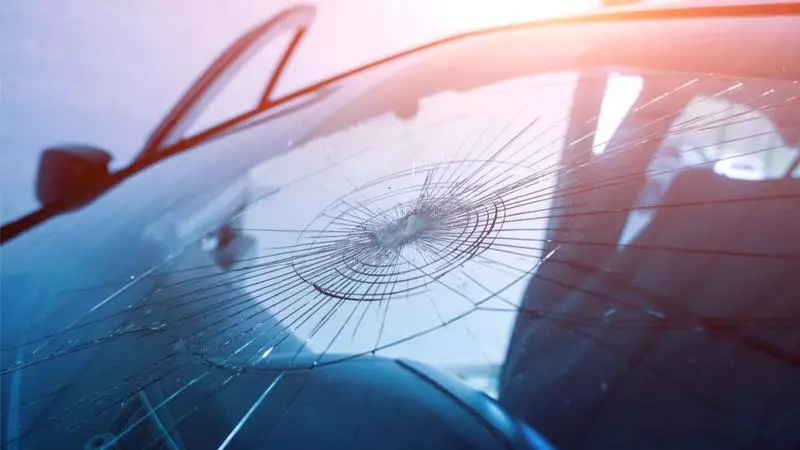You must recognize the importance of appropriate maintenance and regular servicing as a vehicle owner. One issue that is frequently overlooked is driving with a cracked car windshield. Apart from keeping dust, pollutants, rainfall, and wind out of an automobile, the windshield plays an important role in maintaining the vehicle’s structural integrity.
Can I Drive with a Cracked Car Windshield?
Although driving with a minor break in the windshield is normally not harmful, the damaged car windshield should be fixed quickly as soon as possible for two reasons:
- Windshields that have been damaged compromise your safety.
- Visibility is reduced by cracked car windshield.
This isn’t to say that you should disregard a cracked car windshield. Even a minor crack indicates that the glass’ structural integrity has been damaged. A broken car windshield, like a helmet, no longer provides the amount of protection required. If the crack is wide and close to or touching the edge of the windshield, the glass may need to be replaced, and driving the automobile is not suggested.
Windshields are deliberately constructed not to collapse and keep passengers and drivers safe even if they chip, crack, or shatter due to extreme collision. They’re made up of two layers of glass that have been bonded together. If one of the layers of glass breaks, the laminate and the inside layer of glass hold the windshield together, preventing glass fragments from hurting passengers or falling onto the road.
When the damaged car windshield glass hampers the driver’s eyesight, driving with a broken car windshield should also be avoided. Moisture, debris, and even windshield washer fluid can leak into the glass sandwich layers over time, discoloring them and reducing visibility.

Here’s what happens if we don’t take care of the damaged car windshield right away:
1. Reduced Visibility
Optimal visibility is provided by a well-maintained car windscreen. When the car glass gets chips or cracks, it reduces the driver’s vision, in night or rain. This raises the likelihood of a collision or accident. A pitted or cracked car windshield, for that reason, creates glares or flashes of blinding light, which can temporarily blind the driver and endanger the passengers.
2. Compromised Structural Integrity
Most notably, the windshield contributes to the vehicle’s structural integrity. It supports the roof by forming a framework. This indicates that a car window stops the roof from collapsing in the event of a collision. A chipped or broken car windshield may not be able to accomplish its duty. The windscreen is protected from shattering by the laminated glass, that might not be the case if it is already chipped or broken.
3. Airbag Malfunction
For airbags to deploy, a windshield is required. In the event of an accident or impact, the airbags protect the passenger from injury by preventing them from colliding with the steering wheel or dashboard. The windscreen acts as a backstop for the airbag, protecting you in the event of an accident. Airbag deployment will be hampered by a cracked, chipped, or improperly placed windshield.
A damaged car windshield may not be able to withstand the airbag pressure and may burst outside or may damage the airbag itself by piercing its layers.
4. Water Leaks
Water leaks are common when windshields are chipped or cracked. Rainwater or dew may seep in, causing wet interiors and the growth of mold and mildew. It could also cause damage to the electrical components and upholstery. The cost of replacing your windshield should not prevent you from doing so, as these hazards will gradually but steadily add to your expenses. By replacing a damaged car windshield in time, you can avoid these additional costs.
5. Risk of Ejection
When we are in a vehicle, we all wear seatbelts to avoid ejection in the case of an accident or hit. The windshield provides the maximum protection against ejection from the car, which can be fatal if you are not wearing your seatbelt or if it malfunctions for any reason.
These facts demonstrate how dangerous driving with a broken car windshield may be. Visit your local Windshield Experts service center right away if your windshield has been damaged.
How windshield crack spreads?
Most tiny chips, regardless of shape, can be mended, and there are solutions on the market to assist prevent cracks from expanding. However, one of the most prevalent issues with glass cracks is that they tend to expand. Chips and cracks in windshields generate weak places in the glass that will likely spread owing to a variety of circumstances.
Moisture, strain from the vehicle’s body as it travels over bumps and troughs in the road, and temperature fluctuations that cause the glass to expand and contract all put strain on it. The added stress causes the glass to break, and the quality of the windshield will deteriorate the longer you wait to have it repaired.
It’s essential not to press against a cracked car windshield from inside the vehicle. A crack in the windshield’s structural integrity can be significantly compromised due to its concave design, and if pressure is applied from the inside, the glass is likely to crack further. The good news is that windshields are designed to maintain their integrity. Strong coatings on the glass prevent broken shards from falling into the car or onto the road if it breaks. The glass should not split from the frame or tumble into the automobile because the windshield is laminated.
What Should Be Done with a Cracked Car Windshield?
A cracked car windshield must be replaced; big cracks or those that continue to spread will almost certainly necessitate a complete replacement of the glass. Windshield Store quality support and service can fix the glass to function as the original. If your windshield is cracked, contact a reputable auto glass repair shop to determine the best course of action for getting you back on the road.
